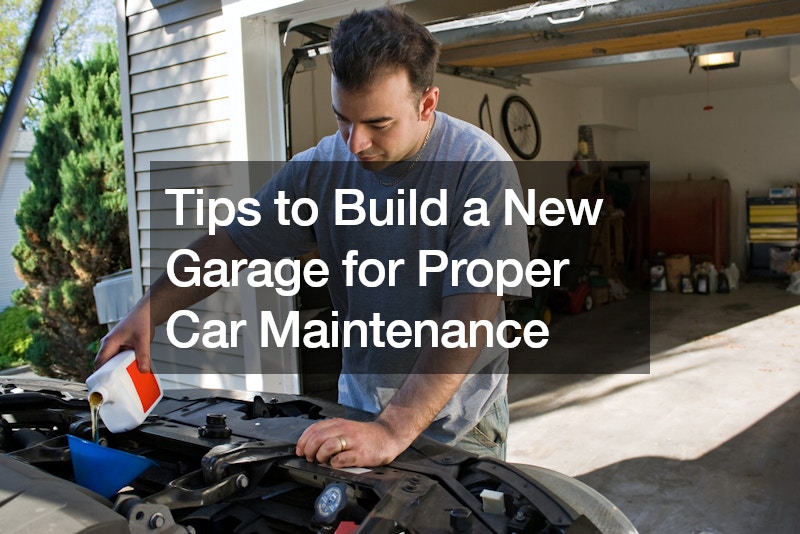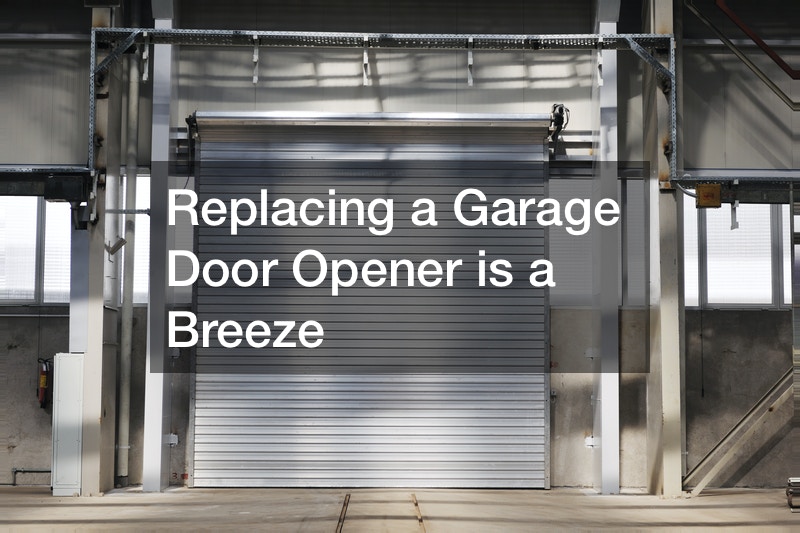
When it comes to proper car maintenance, having a well-built garage can make all the difference. A new garage provides a dedicated space to work on your vehicle, store tools, and protect your car from the elements. Let’s discuss the key factors to consider when you build a new garage with professional assistance for optimal car maintenance this summer.
Location

Choosing the best location when you build a new garage involves careful consideration of various factors to ensure practicality, functionality, and convenience. Whether you’re constructing a garage for personal use or as an investment, selecting the right spot is crucial for maximizing its utility and value.
Firstly, assess the layout and size of your property. Ideally, the garage should be easily accessible from the main road or driveway, minimizing the need for complex maneuvers when entering or exiting. Consider the proximity to the main entrance of your home as well, as you’ll likely appreciate a shorter walk during inclement weather.
Next, evaluate the terrain and topography of your land. Building on level ground is preferable to avoid the complications of uneven surfaces and potential drainage issues. Additionally, take into account any local building codes and regulations that may restrict where you can build on your property.
Consider the orientation of the garage in relation to the sun and prevailing winds. Optimal positioning can help regulate the temperature inside the garage and reduce energy costs associated with heating and cooling. Placing windows strategically can also maximize natural light while minimizing glare and heat gain.
Think about the surrounding environment and how it might impact the garage. For instance, if you live in an area prone to flooding, it’s wise to avoid low-lying areas or consider raising the garage above ground level. Similarly, if you reside in a windy region, positioning the garage behind a windbreak such as trees or a natural barrier can provide protection from strong gusts.
Furthermore, consider the functionality of the garage in relation to your daily activities. If you’ll be using it primarily for storing vehicles, proximity to the house may be less important than easy access to the street. Conversely, if you plan to use the garage as a workshop or storage space, proximity to the house for utilities and convenience becomes more critical.
Choosing the best location when you build a new garage requires careful planning and consideration of various factors. By assessing your property, considering local regulations, and accounting for environmental factors, you can ensure that your garage meets your needs while enhancing the overall functionality and value of your property. Plus, working with a reputable new home builder can also provide valuable insights into choosing the best location for your garage. They will have the expertise to help you navigate the process and make informed decisions based on your specific needs. It’s also important to consult with a local zoning board or a defective car lawyer to ensure that your garage meets all the necessary regulations and requirements. This will help avoid any potential legal issues in the future.
Size and Layout
The size and layout of your new garage will depend on the number of cars you plan to park and the additional space needed for storage and work areas. Consider factors such as ceiling height, door clearance, and maneuvering space when determining the size and layout of your garage.
For optimal functionality, it’s essential to work with an experienced auto repair specialist or local brake repair shop to design a layout that allows for efficient work on your vehicle. Incorporating designated spaces for tools, parts, and equipment will help streamline your car maintenance tasks.
When planning the size and layout of your new garage, consider incorporating space for a paintless dent repair area. This will allow you to address minor dents and dings without the need for costly bodywork. Consider speaking with a transmission maintenance expert, too.
Foundation and Flooring

The foundation and flooring of your new garage play a critical role in its durability and longevity. A solid foundation is essential for supporting the weight of your vehicles and providing stability for the structure. When choosing the foundation material, consider factors such as soil conditions, climate, and local building codes.
Consulting with a reputable builder who specializes in how to build a new garage can help you choose the best foundation and flooring options for your specific needs. They will be able to recommend materials that are durable, cost-effective, and suitable for the local climate.
When installing the flooring in your new garage, consider using a durable and easy-to-clean material such as epoxy or sealed concrete. This will help protect the floor from stains, spills, and damage caused by automotive fluids.
Walls and Roof
Choosing the right walls and roofing materials for your new garage is essential for protecting your vehicles and belongings from the elements. Consider factors such as climate, insulation, and durability when selecting wall and roofing materials.
Working with a reputable car insurance provider can help you assess the risk of weather-related damage to your garage and vehicles. They will be able to recommend materials that offer the best protection and longevity for your specific location.
When choosing walls and roofing for your new garage, consider using materials that are energy-efficient and low-maintenance. This will help reduce heating and cooling costs and extend the lifespan of your garage.
Doors and Windows

Choosing the right doors and windows when you build a new garage is essential for security, ventilation, and natural light. Consider factors such as insulation, security features, and aesthetic appeal when selecting doors and windows for your garage.
When it comes to new garage door opener installation, consider working with a reputable provider who specializes in new garage door opener installation. They will be able to recommend the best options for your specific needs and ensure proper installation for optimal functionality.
When choosing windows for your new garage, consider incorporating features such as tinting or UV protection to prevent sun damage to your vehicles and belongings. This will help maintain the condition and value of your assets over time.
Electrical and Lighting
Choosing the right electrical and lighting setup when you build a new garage is essential for safety, functionality, and comfort. Consider factors such as power needs, lighting levels, and energy efficiency when planning the electrical and lighting layout for your garage.
When installing electrical outlets and lighting fixtures in your new garage, consider working with a licensed electrician who has experience in garage installations. They will be able to ensure that the electrical work meets all safety standards and regulations.
When selecting lighting fixtures for your new garage, consider using energy-efficient LED bulbs or fixtures with motion sensors to reduce energy consumption and enhance visibility. This will create a comfortable and well-lit environment for working on your vehicles.
Ventilation and Climate Control

Setting up proper ventilation and climate control when you build a new garage is key for maintaining a comfortable and safe work environment. Consider factors such as air circulation, temperature control, and humidity levels when planning the ventilation and climate control systems for your garage.
Working with an HVAC specialist can help you design a ventilation and climate control system that meets your specific needs and preferences. They will be able to recommend solutions such as exhaust fans, air conditioning units, or dehumidifiers to create a comfortable environment in your garage.
When setting up ventilation and climate control in your new garage, consider incorporating features such as air filtration systems or HVAC upgrades to improve air quality and reduce odors. This will create a healthier and more pleasant space for working on your vehicles.
Storage and Organization
Creating an efficiently organized garage involves strategic planning and the right storage solutions to maximize space and functionality. The best storage and organization systems for a new garage combine accessibility, durability, and versatility to accommodate various items while keeping the space tidy and accessible.
One of the key elements in organization when you build a new garage is shelving. Adjustable metal or heavy-duty plastic shelving units offer durability and flexibility, allowing you to customize the height and configuration to fit your storage needs. Wall-mounted shelves are excellent for storing frequently used items within easy reach, while overhead shelves utilize vertical space, keeping the floor clear for larger items like vehicles or equipment.
For smaller items and tools, a combination of pegboards, tool racks, and cabinets works wonders. Pegboards mounted on the wall provide a customizable solution for hanging tools, gardening supplies, and other essentials. Tool racks or magnetic strips are ideal for storing hand tools and small metal items, keeping them visible and easily accessible. Cabinets with shelves and drawers offer concealed storage for items you want to keep out of sight, such as chemicals, paints, or automotive supplies.
Utilizing storage bins and containers is essential for keeping items categorized and protected from dust and moisture. Clear plastic bins allow you to see the contents at a glance, while lidded containers offer additional protection for seasonal items or rarely used belongings. Labeling bins and containers ensures quick identification and easy retrieval when needed.
Maximizing vertical space is crucial in garage organization. Utilize wall-mounted bike racks, sports equipment organizers, and vertical garden systems to free up floor space and keep bulky items neatly stored. Installing hooks or racks on the ceiling for bicycles, ladders, or kayaks can further optimize space utilization.
Investing in a sturdy workbench with built-in storage or drawers provides a dedicated area for DIY projects, repairs, and woodworking tasks. Incorporating a pegboard or tool organizer above the workbench keeps tools within arm’s reach while working on projects.
Ultimately, the best storage and organization for a new garage depend on your specific needs and preferences. By combining a variety of storage solutions and maximizing available space, you can create a well-organized garage that enhances efficiency and functionality.
Safety and Security

Security when you build a new garage is essential for protecting your vehicles, tools, and belongings from theft or damage. Consider factors such as lighting, surveillance, and access control when implementing safety and security measures for your garage.
When installing security features in your new garage, consider working with a reputable provider who specializes in security systems or surveillance cameras. They will be able to recommend solutions that meet your security needs and provide peace of mind when storing your vehicles and belongings.
When enhancing safety and security in your new garage, consider incorporating features such as alarm systems, motion sensors, or smart locks to deter potential intruders and protect your assets. This will create a secure and protected environment for your vehicles and valuable items.
Maintenance and Upkeep
Maintaining your new garage is essential for preserving its condition, functionality, and value over time. Consider factors such as cleaning, inspections, and repairs when implementing a maintenance plan for your garage.
Consulting with a reputable builder or maintenance provider can help you establish a routine maintenance schedule for your new garage. They will be able to recommend tasks such as lubricating garage door mechanisms, inspecting electrical wiring, and cleaning flooring to keep your garage in top condition.
When maintaining your new garage, consider investing in high-quality cleaning products, tools, and equipment to preserve its appearance and functionality. This will extend the lifespan of your garage and create a welcoming space for working on your vehicles.
When you build a new garage for proper car maintenance, it is a worthwhile investment that can enhance the functionality, safety, and value of your property. By considering key factors such as location, size, layout, and security, you can create a garage that meets your specific needs and preferences. Consult with professionals such as new home builders, auto repair specialists, and electricians to design a garage that optimizes space, efficiency, and convenience. With proper planning and maintenance, your new garage can provide a dedicated space for car maintenance and storage for years to come.



